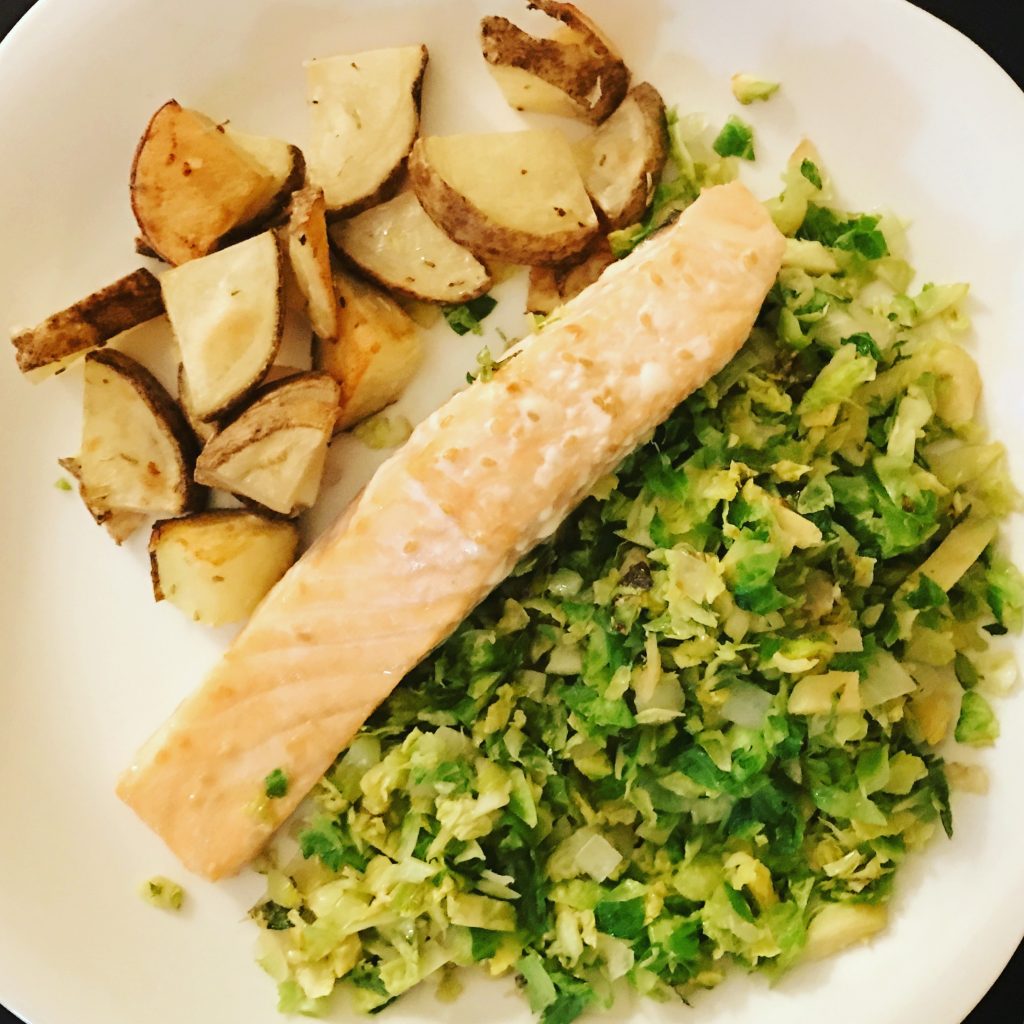When talking about a healthy eating pattern, the topic of appropriate portion sizes inevitably comes up. And while it can be totally okay to geek out on calculating macronutrients and measuring cups, grams, and tablespoons, you don’t have to thanks to what I like to call the Overthink-Proof Plate.
Though I first wrote about it in The Little Book of Game Changers, I’ve been using this formula with my patients and clients for years to help them feel satisfied, balance their blood sugar, and manage their weight while meeting their nutrition needs.
The Overthink-Proof Plate simplifies everything, especially when it comes to meal planning. Here’s how it works: for at least two meals per day, try to fill ½ of your plate with non-starchy veggies, ¼ with protein, ⅛ with healthy fats, and ⅛ with carbs. This simple formula frees you up to enjoy your meals instead of stressing about calculating your food’s nutritional value on an app. It also makes meal planning easier because it allows you to think about balancing nutrients rather than stressing about exactly which foods you’ll eat and build your meal based on what you have on hand or what you’re in the mood for.
Your ½ plate of non-starchy veggies can include foods like:
- Leafy greens
- Artichokes
- Asparagus
- Beets
- Cruciferous veggies like Brussels sprouts, broccoli, and cauliflower
- Cabbage
- Carrots
- Cauliflower
- Peppers
- Cucumbers
Your ¼ plate of (animal or plant) protein can include foods like:
- Meat
- Poultry
- Fish
- Eggs
- Dairy
- Beans, , peas, lentils
- Nuts and seeds, or nut and seed butter
- Tofu, tempeh or other soy products
- Seitan (made from vital wheat gluten)
Your ⅛ plate of healthy fats can include foods like:
- Avocado
- Extra virgin olive oil, avocado oil, or another healthy oil – this can be in cooking or added
- Nuts and seeds (ex: almonds, walnuts, pistachios, sunflower seeds, pumpkin seeds, etc)
- Ground flaxseed
- Chia seeds
- Cheese
Your ⅛ plate of carbs can include foods like:
- Starchy vegetables like potatoes, sweet potatoes, winter squash, corn or peas
- Beans, peas, lentils (in smaller portions they can occupy just that carb space but if you’re also relying on legumes for protein , have a larger serving, like ¾-1 cup)
- Whole grains (bread, pasta, rice, etc)
- Fruit
Refined grains like white flours would also be carb options, but when possible, I recommend making the slow-burning complex carbs your mainstay and saving the refined stuff for special occasions.
And if you want to make room for dessert or an occasional alcoholic beverage, I often recommend swapping out the carb from your meal to make a little extra room.
If you’re wondering what the Overthink-Proof Plate looks like in conjunction with meal planning, here are some of my favorite easy meals:
- Baked Chicken Thighs with Brussels Sprouts and Parsnips
- Easy Miso Salmon
- Any one of these 7 Easy Dinner ideas
Healthy Quick and Easy Breakfast Ideas:
- My Favorite Green Smoothie
- Eggs with veggies and a piece of fruit or side of whole grain toast
- Zucchini Bread Oatmeal topped with a tablespoon of your favorite nut or seed butter
When it comes to snacks, try to strike a balance of protein, fat and carbs. Some great snacks include:
- A sliced apple or pear served with a tablespoon of your favorite nut or seed butter
- ¼ cup of hummus with sliced veggies or whole grain crackers
- Plain Greek yogurt topped with a tablespoon of chia seeds or ¾ cup of berries
